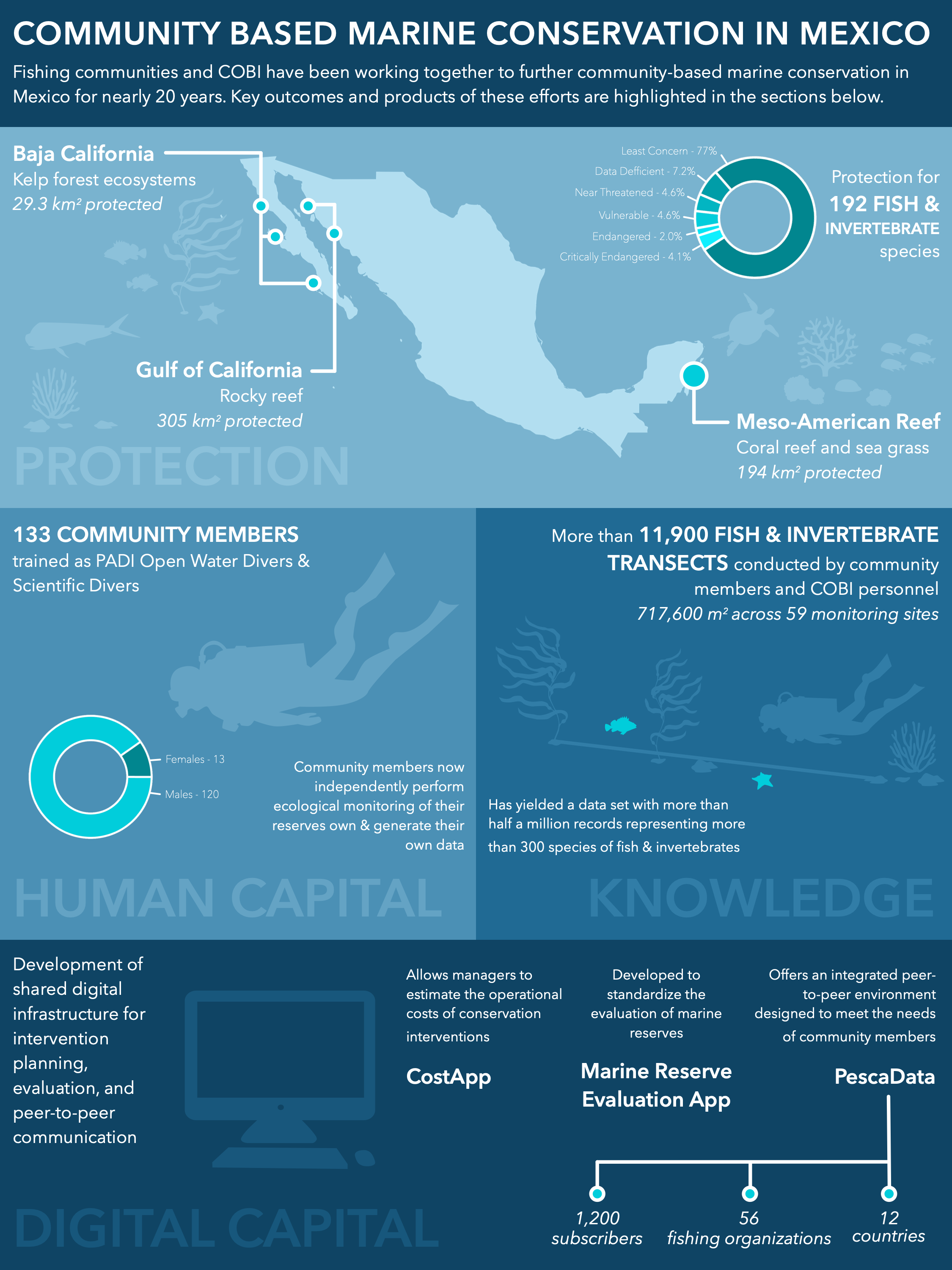Two decades
As a member of the ”High Level Panel for a Sustainable Ocean Economy”, Mexico has committed to further engage in community-based marine conservation. Here we draw from more than two decades of experience with community-based marine conservation in Mexico to analyze the successes of past efforts and how the lessons learned might be leveraged to help inform the government’s ambitious conservation plans for the future:
A total of 514.95 $km^2$ have been protected under community-based marine reserves.
14 years of ecological monitoring data, more than 130 community surveyors, more than one hundred publications, and an entire digital infrastructure provide a solid platform on which to continue building the community-based marine conservation movement.
Parallel and complimentary efforts have advanced regulation, action, data access and transparency, and science communication.
Future interventions should innovate, but leverage existing resources and continue to involve communities.

Can community-based marine reserves pay for their own enforcement?
A pervasive finding is that the success of marine reserves hinge on the operational budget. Sustainable financing mechanisms are therefore crucial to the advancement of marine conservation. Some have proposed market-based mechanisms, such as financial loans that would allow fishers to mitigate short-term economic losses (Ovando et al., 2016) or using proceeds from leasing fishing rights to buffer area around the no-take zone to pay for monitoring and enforcement (Millage et al., 2022). We provide an alternative mechanism better suited for the context of community-based marine reserves in developing countries, where access to market is limiting or where allowing for fishing from third parties may not be desirable. Specifically, we ask: Can community-based marine reserves pay for their own enforcement? We explore this question in the context of community-based marine reserves in Mexican small-scale fisheries, and find that allowing extraction of some biomass from the reserves can more than cover the costs of an ecological monitoring program. Importantly, this set up has three desirable characteristics: 1) Explicitly incorporating economic productivity into reserve design principles from the onset would further incentivize the protection of areas conducive to large conservation gains; 2) The use of area-based measures to manage a fishery can produce additional conservation benefits by excluding fishing and protecting the entire habitat; and 3) This program also has ancillary benefits to the fishery, as fishers monitor control sites (where fishing does occur), which allows them to evaluate the potential impacts from environmental variation.
